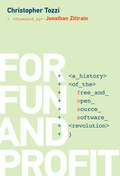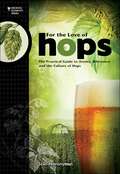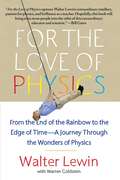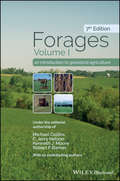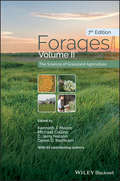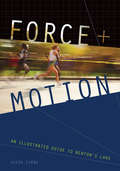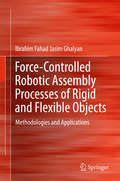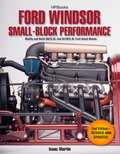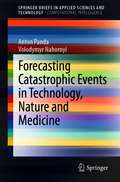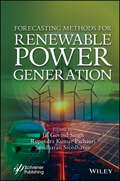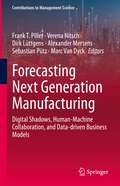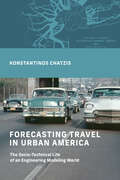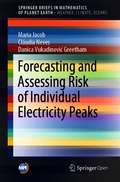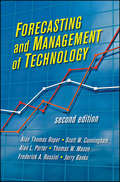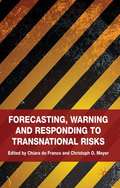- Table View
- List View
For Emma: A Novel
by Ewan MorrisonA year after Emma Henson, a young, genius bio-tech scientist, dies in a covert AI brain-chip experiment, her father Josh has nothing left to live for and vows to get revenge on the Silicon Valley CEO responsible. Josh has thirty days to make his home-made bombs and to say goodbye to his life. To give himself courage in the countdown, he records daily video messages to his lost "Em." He is fueled by the horrific memories of Em&’s death—her body and brain devoured by the AI "infinity" system in its quest for immortality. Memories flood him as he searches for the moments in Emma&’s short life where he could have been a better father and saved her. As he grapples with constructing and testing his DIY bombs, his thirty days start to run out, and Emma&’s voice returns to him, speaking with him as he sets to complete his mission. He worries that he&’s gone insane—he doubts if he can see the violent act through—but Emma&’s voice insists he continue on his path toward murder and mayhem. Josh tries to resist his daughter&’s voice as it attempts to take full control of his body. But is it even her? Or is it a ghost, a psychotic delusion or the AI system that is controlling him? Inspired by the real-life Brain Chip Implant experiments (Musk/Neuralink) and the technogothic tradition (Frankenstein, Dr Jekyll and Mr Hyde, The Island of Dr Moreau), For Emma is a tale of possession by a new force unleashed by science. It is a warning for the future but also an intimate, heart-breaking study of the love between a father and daughter and of the madness that grief can drive us to.
For Fun and Profit: A History of the Free and Open Source Software Revolution (History of Computing)
by Christopher TozziThe free and open source software movement, from its origins in hacker culture, through the development of GNU and Linux, to its commercial use today.In the 1980s, there was a revolution with far-reaching consequences—a revolution to restore software freedom. In the early 1980s, after decades of making source code available with programs, most programmers ceased sharing code freely. A band of revolutionaries, self-described “hackers,” challenged this new norm by building operating systems with source code that could be freely shared. In For Fun and Profit, Christopher Tozzi offers an account of the free and open source software (FOSS) revolution, from its origins as an obscure, marginal effort by a small group of programmers to the widespread commercial use of open source software today. Tozzi explains FOSS's historical trajectory, shaped by eccentric personalities—including Richard Stallman and Linus Torvalds—and driven both by ideology and pragmatism, by fun and profit.Tozzi examines hacker culture and its influence on the Unix operating system, the reaction to Unix's commercialization, and the history of early Linux development. He describes the commercial boom that followed, when companies invested billions of dollars in products using FOSS operating systems; the subsequent tensions within the FOSS movement; and the battles with closed source software companies (especially Microsoft) that saw FOSS as a threat. Finally, Tozzi describes FOSS's current dominance in embedded computing, mobile devices, and the cloud, as well as its cultural and intellectual influence.
For The Love of Hops: The Practical Guide to Aroma, Bitterness and the Culture of Hops (Brewing Elements)
by Stan HieronymusHops, once a marginal player in modern brewing, have risen to iconic status thanks to the American craft beer revolution. In For the Love of Hops Stan Hieronymus explores the rich history, cultivation, and science behind this essential brewing ingredient. Hops have a long and mysterious past. Hieronymus unpacks their story with a discerning eye, separating fact from myth through deep research into historical records, scientific studies, and interviews with experts and growers. His work offers a compelling, wide-ranging look at how hops evolved from a supporting player to a defining feature in beer. From field to fermenter, the path of the hop is anything but simple. Hieronymus blends technical details—such as hop anatomy and growth cycles—with firsthand stories from farming families who&’ve cultivated hops for generations. He leads readers through historic and emerging growing regions: Germany, the Czech Republic, England, the U.S., Australia, and New Zealand. Along the way, he illustrates the challenges growers face, from crop diseases to shifting market demands. Hieronymus also provides a catalog of over 100 hop varieties, from noble Old World types like Saaz and Tettnang to bold New World stars like Cascade, Amarillo, and Nelson Sauvin. Each entry includes vital stats and insights on flavor, aroma, and usage. Once harvested, hops unlock a brewer&’s full creative range. The book dives into their essential compounds—alpha and beta acids—and how they influence bitterness, flavor stability, and aroma. Hieronymus breaks down a variety of hopping techniques, including: Early &Late Additions – How timing shapes flavor. First Wort Hopping – Adding hops before the boil. Hop Bursting & Continuous Hopping – Techniques for maximizing aroma. Dry Hopping – A full chapter dedicated to this aromatic art, from 19th-century England to today&’s cutting-edge methods like hop rockets and torpedoes. He also explores how the perception of bitterness varies by individual and how exposure to heavily hopped beers can change our taste preferences—a phenomenon known as the &“lupulin shift.&” The development and meaning of IBUs (International Bitterness Units) are explained in context, helping demystify a widely misunderstood metric. To ground theory in practice, the book features 16 beer recipes from renowned breweries in the U.S., Belgium, Germany, England, New Zealand, and more. These recipes reveal how top brewers use hops to shape character and balance.For the Love of Hops is both educational and inspiring—a must-read for brewers, beer lovers, and anyone interested in the flower that changed beer forever.
For the Love of Physics: From the End of the Rainbow to the Edge Of Time - A Journey Through the Wonders of Physics
by Walter Lewin“YOU HAVE CHANGED MY LIFE” is a common refrain in the emails Walter Lewin receives daily from fans who have been enthralled by his world-famous video lectures about the wonders of physics. “I walk with a new spring in my step and I look at life through physics-colored eyes,” wrote one such fan. When Lewin’s lectures were made available online, he became an instant YouTube celebrity, and The New York Times declared, “Walter Lewin delivers his lectures with the panache of Julia Child bringing French cooking to amateurs and the zany theatricality of YouTube’s greatest hits.” For more than thirty years as a beloved professor at the Massachusetts Institute of Technology, Lewin honed his singular craft of making physics not only accessible but truly fun, whether putting his head in the path of a wrecking ball, supercharging himself with three hundred thousand volts of electricity, or demonstrating why the sky is blue and why clouds are white. Now, as Carl Sagan did for astronomy and Brian Green did for cosmology, Lewin takes readers on a marvelous journey in For the Love of Physics, opening our eyes as never before to the amazing beauty and power with which physics can reveal the hidden workings of the world all around us. “I introduce people to their own world,” writes Lewin, “the world they live in and are familiar with but don’t approach like a physicist—yet.” Could it be true that we are shorter standing up than lying down? Why can we snorkel no deeper than about one foot below the surface? Why are the colors of a rainbow always in the same order, and would it be possible to put our hand out and touch one? Whether introducing why the air smells so fresh after a lightning storm, why we briefly lose (and gain) weight when we ride in an elevator, or what the big bang would have sounded like had anyone existed to hear it, Lewin never ceases to surprise and delight with the extraordinary ability of physics to answer even the most elusive questions. Recounting his own exciting discoveries as a pioneer in the field of X-ray astronomy—arriving at MIT right at the start of an astonishing revolution in astronomy—he also brings to life the power of physics to reach into the vastness of space and unveil exotic uncharted territories, from the marvels of a supernova explosion in the Large Magellanic Cloud to the unseeable depths of black holes. “For me,” Lewin writes, “physics is a way of seeing—the spectacular and the mundane, the immense and the minute—as a beautiful, thrillingly interwoven whole.” His wonderfully inventive and vivid ways of introducing us to the revelations of physics impart to us a new appreciation of the remarkable beauty and intricate harmonies of the forces that govern our lives.
For the Love of the Army: A Celebration of the British Armed Forces
by Ray HamiltonFrom the heroes, regiments and famous battles of the British Army’s impressive history to the service people of today, this book celebrates the achievements and ongoing importance of the UK’s land force. It also explores the skills, weaponry and equipment necessary to keep the Army battle-ready and able to face any challenge.
For the Love of the Army: A Celebration of the British Armed Forces
by Ray HamiltonFrom the heroes, regiments and famous battles of the British Army’s impressive history to the service people of today, this book celebrates the achievements and ongoing importance of the UK’s land force. It also explores the skills, weaponry and equipment necessary to keep the Army battle-ready and able to face any challenge.
Forage Crops in the Bioenergy Revolution: From Fields to Fuel
by Rajesh Kumar Singhal Ayman El Sabagh Indu Krishna Kumar DwivediThis book delves into the popular "Food vs. Fuel" arguments and examines the complicated interplay between biofuel and agricultural markets. It provides information on forage crops as potential third-generation sources of bioenergy, and their cultivation practices. The areas covered include methodologies to enhance production efficiency of bioenergy, metabolism involved in cellulosic ethanol production, influence of policy and technical implementation, and the consequent impact on biofuels. The discussion of current difficulties impeding the expansion of the cellulosic biofuel business, as well as potential solutions are discussed as well. This book also covers case studies describing the present biofuel policies and its consequences on both the energy as well as agricultural sectors, as well as analysis of the current and growing biofuel market. The gathered information in the book is an excellent source for phenotyping, trait improvement, and developing future crop stress-management strategies and models. Students, scientists, policymakers, and investors in the bioenergy business will find this book to be a useful resource. Also, it serves as an excellent reference book for agriculturists, plant scientists, climatologists, and research scholars.
Forages, Volume 1: An Introduction to Grassland Agriculture
by Michael Collins C. Jerry Nelson Kenneth J. Moore Robert F. BarnesForages, Volume I, Seventh Edition is the most comprehensive text available for teachers of undergraduate Forages courses. This edition will provide students with a good balance of scientific principles, to aid in integrating the concepts they learn, and practical information on forage identification, plant characteristics, management, and utilization that can be used by forage management practitioners. Grassland ecosystems are extremely complex, including the plant/animal interface as well as the soil/climate/forage interface and the text must support understanding and integration of all of these considerations. The coverage of the science behind the plant characteristics and responses make the book applicable in many parts of the world, while other region-specific management information relates mainly to North America.This edition has been updated to address emerging areas of study, including the use of forage plants as bioenergy crops. The editors also address the renewed national interest in environmental issues such as water quality, global climate change and eutrophication in the Gulf. This edition also addresses the role of forages for wildlife habitat and food sources, another area of increased interest in recent years. These revisions respond to the generational change taking place among forage scientists and teachers in recent years.
Forages, Volume 2: The Science of Grassland Agriculture (Special Publication Ser. #Vol. 22)
by Michael Collins C. Jerry Nelson Kenneth J. Moore Daren D. RedfearnForages: The Science of Grassland Agriculture, 7th Edition, Volume II will extensively evaluate the current knowledge and information on forage agriculture.Chapters written by leading researchers and authorities in grassland agriculture are aggregated under section themes, each one representing a major topic within grassland science and agriculture. This 7th edition will include two new additional chapters covering all aspects of forage physiology in three separate chapters, instead of one in previous editions. Chapters will be updated throughout to include new information that has developed since the last edition.This new edition of the classic reference serves as a comprehensive supplement to An Introduction to Grassland Agriculture, Volume I.
Force Majeure in the Hydropower Industry: Concepts and Case Studies
by Daniel Constantin DiaconuThis book aims to highlight the particular situation faced by certain hydropower companies by the fact that they cannot fulfil their contracts due to force majeure. The first part of this book will be an analysis of how water is used in electricity production. It is important to point out that all types of energy sources use water, to a different extent, of course, and that its spatial and temporal availability is very important. The focus will be on hydropower, presenting the current situation at the global level, and the effect of reducing the amounts of water in the river system.The second part is based on the presentation of the concept of force majeure and the ways of presenting and drafting it in a contract. Many disputes or the success of a contract depended heavily on the provisions of this article of the contract. Obviously, there are also situations in which the signatory parties abuse or are not protected by these provisions of force majeure. Starting from a few brief examples from the international level, we reach a wide discussion of the situation created in Romania, when the largest supplier of electricity produced on the basis of water terminates several contracts invoking force majeure. The manner in which the opinion of the parties involved is presented to the court is analyzed and presented in detail.
Force and Motion: An Illustrated Guide to Newton's Laws
by Jason ZimbaIsaac Newton developed three laws of motion that govern the everyday world. These laws are usually presented in purely mathematical forms, but Jason Zimba breaks with tradition and treats them visually. This unique approach allows students to appreciate the conceptual underpinnings of each law before moving on to qualitative descriptions of motion and, finally, to the equations and their solutions.Zimba has organized the book into seventeen brief and well-sequenced lessons, which focus on simple, manageable topics and delve into areas that often cause students to stumble. Each lesson is followed by a set of original problems that have been student-tested and refined over twenty years. Zimba illustrates the laws with more than 350 diagrams, an innovative presentation that offers a fresh way to teach the fundamentals in introductory physics, mechanics, and kinematics courses.
Force and Position Control of Mechatronic Systems: Design and Applications in Medical Devices (Advances in Industrial Control)
by Tong Heng Lee Kok Kiong Tan Clarence W. de Silva Wenyu LiangForce and Position Control of Mechatronic Systems provides an overview of the general concepts and technologies in the area of force and position control. Novel ideas and innovations related to this area are presented and reported in detail, and examples of applications in medical technology are given.The book begins by introducing force sensing, and modelling of contacting objects. In then moves steadily through a variety of topics, including:• disturbance observer-based force estimation;• force-based supervisory control;• stabilization systems;• controller design; and• control of tube insertion procedures.This book will be of interest to researchers, engineers and students interested in force control, particularly those with a focus on medical applications of these ideas.Advances in Industrial Control reports and encourages the transfer of technology in control engineering. The rapid development of control technology has an impact on all areas of the control discipline. The series offers an opportunity for researchers to present an extended exposition of new work in all aspects of industrial control.
Force-Controlled Robotic Assembly Processes of Rigid and Flexible Objects
by Ibrahim Fahad Jasim GhalyanThis book provides comprehensive and integrated approaches for rigid and flexible object assembly. It presents comparison studies with the available force-guided robotic processes and covers contact-state modeling, scheme control strategies, and position searching algorithms. Further, it includes experimental validations for different assembly situations, including those for the assembly of industrial parts taken from the automotive industry.
Forced Oscillations of Multidimensional Highly Nonlinear Systems: Deterministic Chaos and Random Changes in Parameters (Advanced Structured Materials #222)
by Vladimir Metrikin Igumnov LeonidThis book highlights the presentation of methods for studying oscillations under external periodic influence and random changes in parameters in dynamic systems with nonlinearities that have discontinuities and kinks. The analysis of dynamic systems is based on effective approaches and algorithms of the method of point mappings of Poincaré surfaces, developed by the Nizhny Novgorod Scientific School of academician A.A. Andronov. Considerable attention is paid to the study of the general picture of the possible behavior of systems and their use in solving various applied problems. Using specific examples, it is found that this research approach allows not only to advance in the study of known nonlinear features but also to discover new effects and applications. The presentation is illustrated by numerous specific examples of oscillatory strongly nonlinear systems with discontinuous nonlinearities or piecewise-continuous nonlinearities. A separate chapter is devoted to the development and use of the point mapping method for random changes in the parameters of dynamic systems, as well as in dynamic systems subject to external seismic loads. The book is intended for scientists and engineers who are engaged in research and practice activities related to the theory of nonlinear oscillations and its applications, as well as graduate students and senior undergraduate students in relevant majors.
Forcefields for Atomistic-Scale Simulations: Materials and Applications (Lecture Notes in Applied and Computational Mechanics #99)
by Suchart Siengchin Sanjay Mavinkere Rangappa Akarsh Verma Shigenobu OgataThis book describes the forcefields/interatomic potentials that are used in the atomistic-scale and molecular dynamics simulations. It covers mechanisms, salient features, formulations, important aspects and case studies of various forcefields utilized for characterizing various materials (such as nuclear materials and nanomaterials) and applications. This book gives many help to students and researchers who are studying the forcefield potentials and introduces various applications of atomistic-scale simulations to professors who are researching molecular dynamics.
Forces are Fantastic! (Surprised by Science #3)
by Sabrina Rose Science GirlBe surprised by the astonishing science of forces, with Sabrina Rose, AKA Science Girl, the internet's most inspiring curator of facts and observations of our wonderful world - making it easy for all readers to come to love science!Surprised by Science: Forces are Fantastic brings an attention-grabbing and accessible set of facts about forces and physics to life! Doing what she's famous for online, Sabrina Rose dives into the most surprising details of the world of forces to explore the science at work. From black holes to gravity in space; from magnets in navigation to friction in storms - this series is perfect for inquisitive children age 7 and up, and all fans of Science Girl.Surprised by Science is a series of books that takes the inspiring communication and research skills of Science Girl's hugely popular platform and distills it on the page, with funny and engaging illustrations by Pipi Sposito paired with photos of the real-life science in action. The series includes: Electricity is Epic!; Plants are Powerful!; Forces are Fantastic!; Sound is Sensational!; Animals are Awesome!; Human Bodies are Brilliant!
Ford Windsor Small-Block Performance HP1558: Modify and Build 302/5.0L ND 351W/5.8L Ford Small Blocks
by Isaac MartinThis completely revised and updated edition of HP's bestselling book on how to build high performance 5.0/5.8L Ford small-block engines-the second most popular engine modified in the aftermarket-contains five new chapters on the latest technology for modifying the cylinder block, heads, camshafts, valvetrain, exhaust systems, and more.
Ford Windsor Small-Block Performance HP1558: Modify and Build 302/5.0L ND 351W/5.8L Ford Small Blocks
by Isaac MartinThis completely revised and updated edition of HP's bestselling book on how to build high performance 5.0/5.8L Ford small-block engines-the second most popular engine modified in the aftermarket-contains five new chapters on the latest technology for modifying the cylinder block, heads, camshafts, valvetrain, exhaust systems, and more.
Forecasting Catastrophic Events in Technology, Nature and Medicine (SpringerBriefs in Applied Sciences and Technology)
by Anton Panda Volodymyr NahornyiThis book presents a methodology for forecasting events and phenomena occurring in technology and natural environments. The methodology is based on forecasting the individual state of the control object, which is carried out based on the analysis of the trend behavior of the controlled parameter (symptom of the disease). The methodology helps determining the time of the onset of a destructive earthquake, its strength and the coordinates of the epicentre, predicting the time of the descent of glaciers and landslides long before the event. In medicine, the methodology predicts the severity of a disease and forecast of its aggravation.
Forecasting Methods for Renewable Power Generation
by Rupendra Kumar Pachauri Jai Govind Singh Sasidharan SreedharanForecasting Methods for Renewable Power Generation is an essential resource for both professionals and students, providing in-depth insights into vital forecasting techniques that enhance grid stability, optimize resource management, and enable effective electricity pricing strategies. It is a must-have reference for anyone involved in the clean energy sector. Forecasting techniques in renewable power generation, demand response, and electricity pricing are vital for grid stability, optimal resource allocation, efficient energy management, and cost-effective electricity supply. They enable grid operators and market participants to make informed decisions, mitigate risks, and enhance the overall reliability and sustainability of the electrical grid. Electricity prices can vary significantly based on supply and demand dynamics. By forecasting expected demand and the availability of generation resources, market operators can optimize electricity pricing strategies. This alignment of prices with anticipated supply-demand balance incentivizes the efficient use of electricity and promotes market efficiency. Accurate forecasting helps prevent price spikes, reduces market uncertainties, and supports the development of effective energy trading strategies. This book presents these topics and trends in an encyclopedic format, serving as a go-to reference for engineers, scientists, or students interested in the subject. The book is divided into three easy-to-navigate sections that thoroughly examine the AI and machine learning-based algorithms and pseudocode considered in this study. This is the most comprehensive and up-to-date encyclopedia of forecasting in renewable power generation, demand response, and electricity pricing ever written, and is a must-have for any library.
Forecasting Next Generation Manufacturing: Digital Shadows, Human-Machine Collaboration, and Data-driven Business Models (Contributions to Management Science)
by Frank T. Piller Alexander Mertens Verena Nitsch Dirk Lüttgens Sebastian Pütz Marc Van DyckManufacturing companies have just begun to implement the concepts of the Fourth Industrial Revolution (Industry 4.0) on a larger scale. Still, this area is characterized by a rapid pace of technological change, blurring boundaries between physical, digital, and biological systems, and a quickly changing growing political, economic, and social environment -- leading to high uncertainty in decision making and many questions about the future development in this field. To provide guidance and inspiration for managers and academics on the future of digital manufacturing systems, this book presents the results of an extensive Delphi study on next-generation manufacturing systems, with a projection period of up to 2030. We analyzed almost 2000 quantitative estimations and more than 600 qualitative arguments from a large panel of industrial and academic experts from Europe, North America, and Asia. The book describes each of the 24 projections in detail, offering current case study examples and related research, as well as implications for policymakers, firms, and individuals. The empirical results also allowed us to build scenarios for the most probable future along the dimensions of governance, organization, capabilities, and interfaces from both a company-internal and an external (network) perspective.
Forecasting Travel in Urban America: The Socio-Technical Life of an Engineering Modeling World
by Konstantinos ChatzisA history of urban travel demand modeling (UTDM) and its enormous influence on American life from the 1920s to the present.For better and worse, the automobile has been an integral part of the American way of life for decades. Its ascendance would have been far less spectacular, however, had engineers and planners not devised urban travel demand modeling (UTDM). This book tells the story of this irreplaceable engineering tool that has helped cities accommodate continuous rise in traffic from the 1950s on. Beginning with UTDM&’s origins as a method to help plan new infrastructure, Konstantinos Chatzis follows its trajectory through new generations of models that helped make optimal use of existing capacity and examines related policy instruments, including the recent use of intelligent transportation systems.Chatzis investigates these models as evolving entities involving humans and nonhumans that were shaped through a specific production process. In surveying the various generations of UTDM, he delves into various means of production (from tabulating machines to software packages) and travel survey methods (from personal interviews to GPS tracking devices and smartphones) used to obtain critical information. He also looks at the individuals who have collectively built a distinct UTDM social world by displaying specialized knowledge, developing specific skills, and performing various tasks and functions, and by communicating, interacting, and even competing with one another.Original and refreshingly accessible, Forecasting Travel in Urban America offers the first detailed history behind the thinkers and processes that impact the lives of millions of city dwellers every day.
Forecasting and Assessing Risk of Individual Electricity Peaks (Mathematics of Planet Earth)
by Maria Jacob Cláudia Neves Danica Vukadinović GreethamThe overarching aim of this open access book is to present self-contained theory and algorithms for investigation and prediction of electric demand peaks. A cross-section of popular demand forecasting algorithms from statistics, machine learning and mathematics is presented, followed by extreme value theory techniques with examples.In order to achieve carbon targets, good forecasts of peaks are essential. For instance, shifting demand or charging battery depends on correct demand predictions in time. Majority of forecasting algorithms historically were focused on average load prediction. In order to model the peaks, methods from extreme value theory are applied. This allows us to study extremes without making any assumption on the central parts of demand distribution and to predict beyond the range of available data. While applied on individual loads, the techniques described in this book can be extended naturally to substations, or to commercial settings. Extreme value theory techniques presented can be also used across other disciplines, for example for predicting heavy rainfalls, wind speed, solar radiation and extreme weather events. The book is intended for students, academics, engineers and professionals that are interested in short term load prediction, energy data analytics, battery control, demand side response and data science in general.
Forecasting and Management of Technology
by Alan L. Porter Thomas W. Mason Frederick A. Rossini Scott W. Cunningham A. Thomas Roper Jerry BanksPublished in 1991, the first edition of Forecasting and Management of Technology was one of the leading handful of books to deal with the topic of forecasting of technology and technology management as this discipline was emerging. The new, revised edition of this book will build on this knowledge in the context of business organizations that now place a greater emphasis on technology to stay on the cutting edge of development. The scope of this edition has broadened to include management of technology content that is relevant to now to executives in organizations while updating and strengthening the technology forecasting and analysis content that the first edition is reputed for. Updated by the original author team, plus new author Scott Cunningham, the book takes into account what the authors see as the innovations to technology management in the last 17 years: the Internet; the greater focus on group decision-making including process management and mechanism design; and desktop software that has transformed the analytical capabilities of technology managers. Included in this book will be 5 case studies from various industries that show how technology management is applied in the real world.
Forecasting, Warning and Responding to Transnational Risks
by Chiara De Franco Christoph O. MeyerAssembling a high profile group of scholars and practitioners, this book investigates the interplay of forecasting; warnings about, and responses to, known and unknown transnational risks. It challenges conventional accounts of 'failures' of warning and preventive policy in both the academic literature and public debate.

